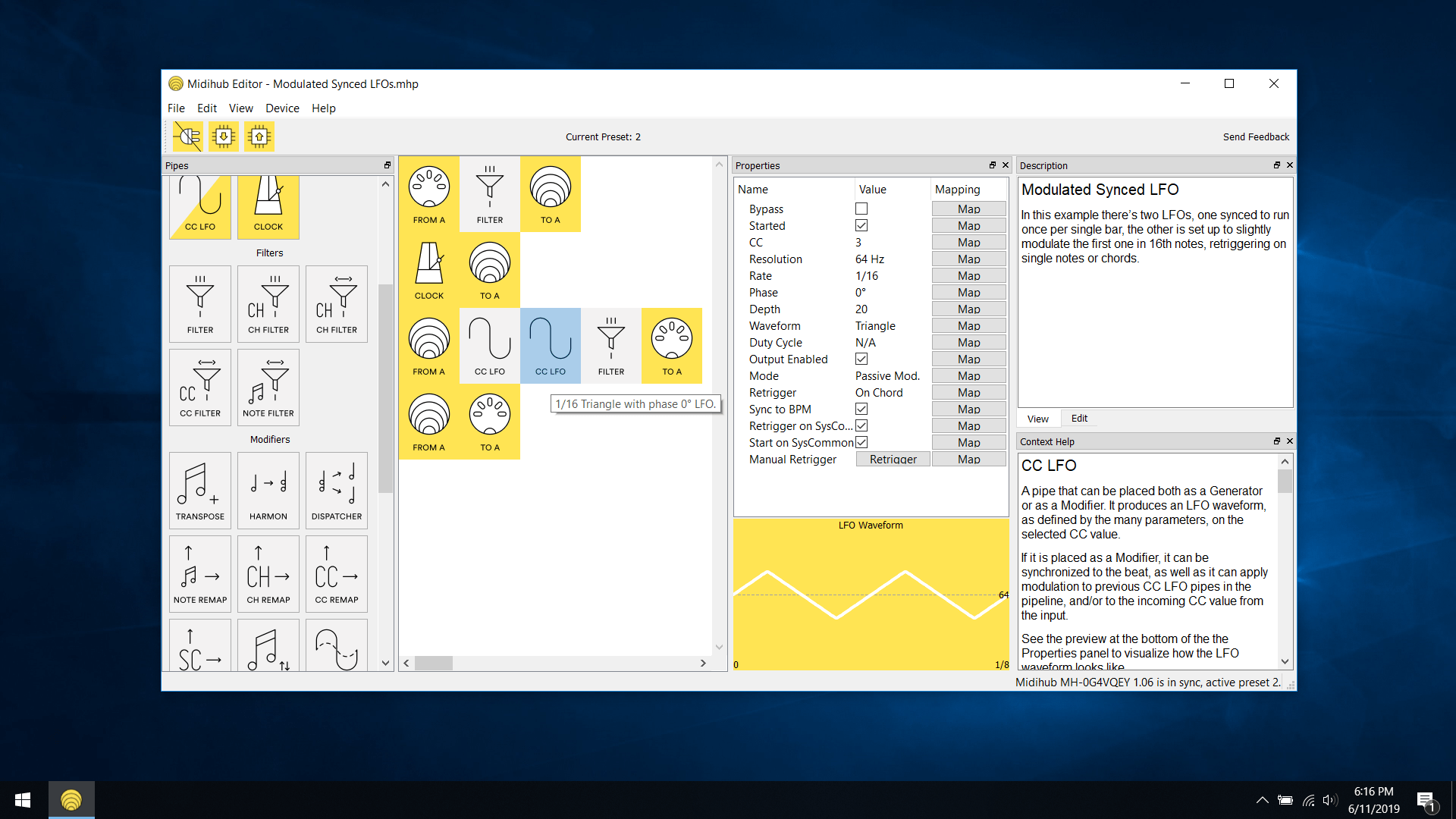The Midihub Editor

The Midihub Editor lets you customize Midihub's processing logic by laying down the processing pipelines using different Pipes, sort of MIDI effects. The interface is based on intuitive Drag & Drop model. Every pipeline starts from an Input or Generator pipe, from which MIDI data flows to the right, until it ends up in an Output pipe. You can play around with the Editor even without the device connected. Midihub Editor works on all major platforms - Windows, macOS and Linux!
Downloads
Download the latest version of the Editor for your platform:
The Processing Pipelines
MIDI data flows through Midihub Processing Pipelines from left to right. All MIDI data enters the pipeline through the leftmost Input or Generator pipes, and exits through the rightmost Output pipes. MIDI Monitor pane can be used to see the data flow in real time. Processing the same MIDI event multiple times and in different ways is possible by making use of Virtual Input / Output ports. The data sent to a Virtual Output port will appear again in the matching Virtual Input ports, enabling implementation of keyboard splits or automatically generating chords. Pipes that modify or filter MIDI data can be placed in between the Input and Output ports. In case a pipe discards the MIDI data flowing through it, it won't be forwarded to the pipe on the right, dropping the event.
Pipelines from a file may be imported into the current Preset. They may also be imported directly from Patchstorage.
The Pipelines are built by dragging in Pipe icons from Pipes pane into the main canvas. To customize functionality of each pipe, the parameters of the currently selected pipe can be changed in the Properties pane. Holding down Alt or Ctrl keys while dragging a Pipe will create a copy in a new location. Holding down Shift as well copies the mappings along with the Pipe. The mouse right-click menu shows options for duplicating the entire pipeline.
If you are running two instances of Midihub Editor, Alt/Ctrl-drag may be used to copy a pipe from one canvas to the other.
Comments
You may keep notes using inline comments in the Editor's Preset area. Simply right click and select Add Comment.
To add a new line while editing a comment, use Shift + Enter.
Pipe Parameters
Every pipe has a 'Bypass' parameter which, when enabled, bypasses the processing of the pipe, so it passes the incoming data to the right unmodified. If the leftmost pipe is bypassed, the entire pipeline gets disabled.
See MIDI Mappings for more information on controlling the parameters using external MIDI controllers as well as internally by using the Virtual outputs.